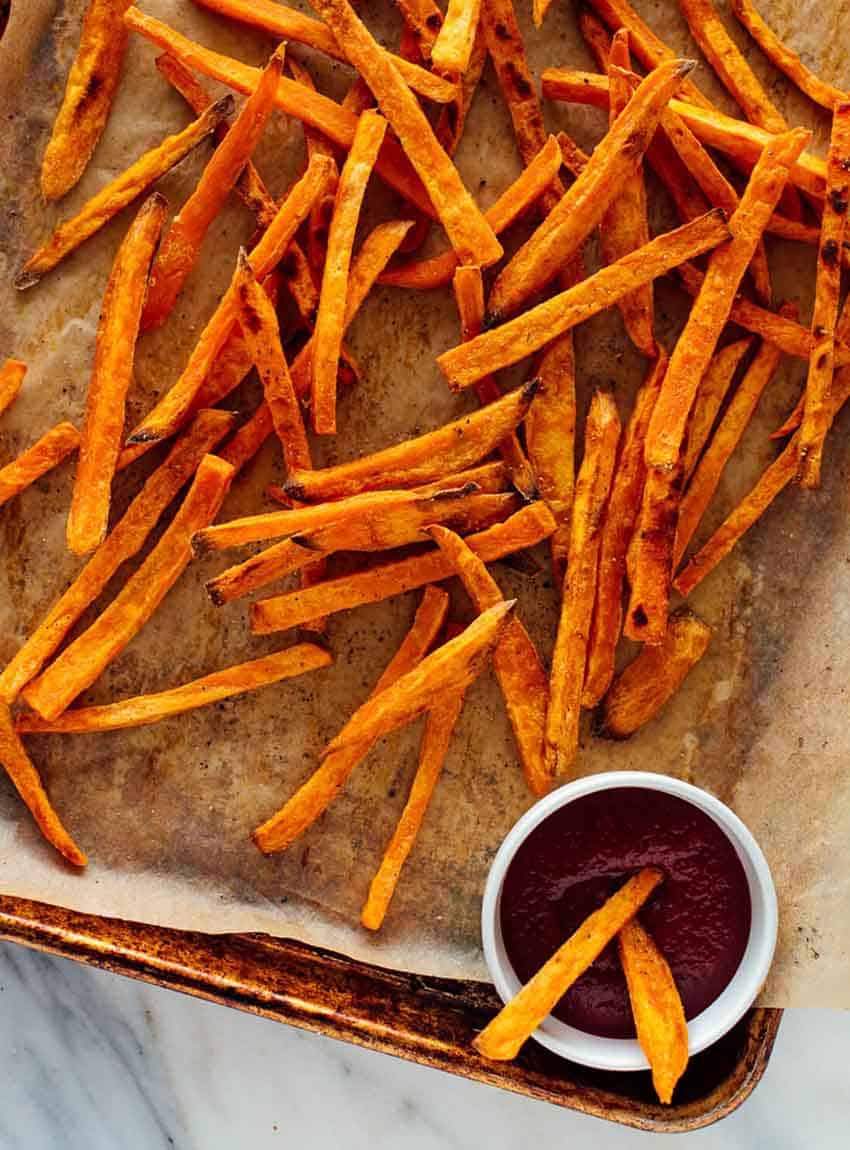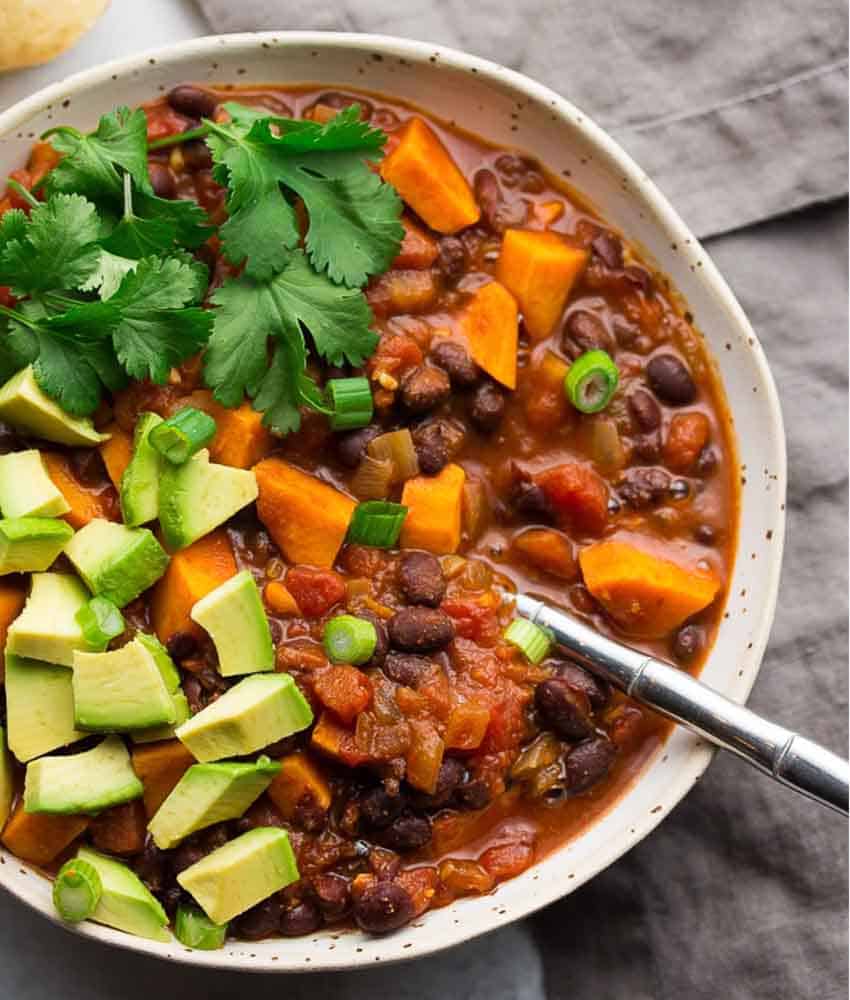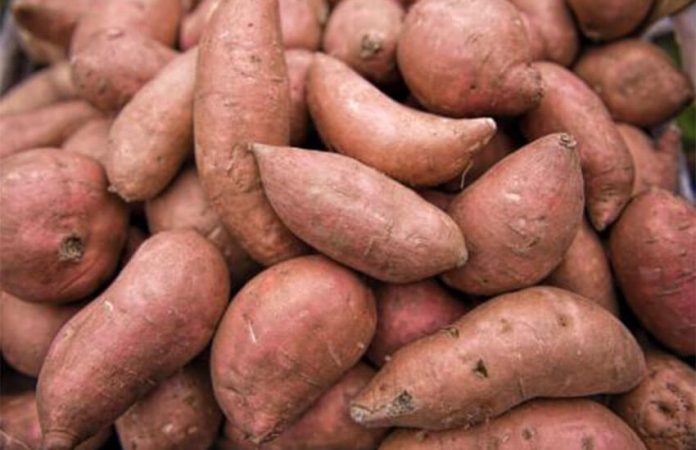I’m an unabashed lover of sweet potatoes — camotes in Spanish — in just about every way, shape or form.
Baked, mashed, fried, chips: you name it, I love it. And one of the wonderful surprises about living in Mexico has been the camoteros, street vendors selling oven-roasted sweet potatoes. On my street, Luis comes every Monday evening like clockwork around 6 p.m. with his little rolling stainless steel oven, its steam whistle announcing his arrival.
Here in Mazatlán, locals like to eat them bathed in sweetened condensed milk, which is way too sweet for me. Sometimes I just get them “natural” and add my own butter and salt. Other nights, I might get a mixed plate of sweet potatoes and plantains, to either eat plain or to cut up and add to a Thai curry made earlier and sitting at the ready on my stove. Especially in the summer, when one is loath to turn on the oven, it’s just so convenient! Also common are candied sweet potatoes, dripping in piloncillo (whole cane sugar) syrup, available in the mercados and in almost every neighborhood store.
Sweet potatoes, it turns out, are not really potatoes at all (and not the same as yams, either). Regular potatoes are tubers in the nightshade family; sweet potatoes are considered a root vegetable and from the morning glory genus. Kind of obviously, sweet potatoes have much more natural sugar than a regular potato — more than 10 times as much — and more carbs, fat and calories too. Whatever; they’re delicious.

The word camote comes from the Náhuatl camohtli; in some parts of Mexico and other South American countries, sweet potatoes are known as papa dulce, batata or patata dulce. Interestingly, in the Phillipines they’re called kamote.
They’re eaten all over the world, and the combination of their high nutritional value, ease of cultivation and storage and basic yumminess makes them popular from China to Africa, Japan to Spain, Italy to Peru, India to Mexico. You kind of can’t escape them!
Just a note about baking sweet potatoes at home: yes, you can use the microwave, and that’s fast and easy. But you’ll get a much better texture and decidedly better flavor if you slowly roast them, preferably wrapped in foil to trap steam, which allows the natural sugars to caramelize and the starch to convert to sugar.
The website Serious Eats, one of my go-to sources for reliable food and recipe information, suggests freezing sweet potatoes before baking them for the best flavor. Is it worth the effort? You be the judge; here’s the link.
Baked Sweet Potato Fries
- 2 lbs. sweet potatoes, peeled
- 2 Tbsp. olive or coconut oil
- 1 tsp. garlic powder
- 1 tsp. paprika
- 1 tsp. salt
- ½ tsp. black pepper
Cut sweet potatoes into sticks ¼- to ½-inch wide and 3 inches long. Rinse and soak in cold water for 1–3 hours to remove starch. Heat oven to 400 F (200 C).
Drain potato sticks and pat dry. In a bowl, toss with the oil, spices, salt and pepper. Spread potato sticks on two rimmed baking sheets. Bake until brown and crisp on the bottom, about 15 minutes, then flip and cook other side until crisp, about 10 minutes. Serve immediately. — nytimes.com
Shrimp & Sweet Potato Hash
- 3 lbs. sweet potatoes, peeled and cut into ¾-inch chunks
- 3-4 Tbsp. olive/coconut oil
- 2 tsp. salt
- ½ tsp. black pepper
- 1 medium onion, diced
- 1 bell pepper, diced
- 2 large garlic cloves, minced
- 1 jalapeño, seeded and minced
- 1 tsp. chili powder
- 1 lb. jumbo shrimp, peeled, deveined, cut in half
- 2 Tbsp. freshly squeezed lime juice
- ¼ cup chopped fresh cilantro
Preheat oven to 425 F (220 C). In large bowl, toss potatoes with 2 Tbsp. oil, 2 tsp. salt and ½ tsp. black pepper. Spread potatoes on two baking sheets. Bake, tossing occasionally, until potatoes are golden, crisp around edges and tender, about 35 minutes. In large skillet, heat remaining 2 Tbsp. oil over medium-high heat. Add onions and bell peppers. Cook, stirring, until softened, about 10 minutes. Add garlic, jalapeños and chili powder; cook 2 minutes more.
Add shrimp. Cook, tossing occasionally, until shrimp is just opaque, about 3 minutes. Add lime juice, stirring to scrape up any browned bits from bottom of pan. Mix shrimp mixture with sweet potatoes in a large bowl; add salt to taste. Stir in cilantro and serve.

Black Bean Sweet Potato Slow-Cooker Chili
- 1 large sweet potato, peeled and cubed
- 1 can whole black beans
- 1 (14 oz.) can crushed tomatoes
- 1/3 cup orange juice
- 2 Tbsp. coconut oil
- 1-2 canned chipotles in adobo, plus 1-2 Tbsp. of the sauce
- 1 Tbsp. brown sugar
- Juice of ½ lime
- 3 garlic cloves
- 1 tsp. EACH cumin, garlic and onion powder
- Salt and pepper
Put everything in crockpot; cook on high for 8 hours. Alternatively, cook in saucepan over medium heat for 1 hour or longer, stirring occasionally, until sweet potato is tender and flavors meld. Serve garnished with avocado, cilantro, crema, etc.
Sweet Potato Hash Browns
Crisp, salty, buttery and addictive…
- 1 large sweet potato, scrubbed and dried
- 2 Tbsp. cornstarch
- 2 Tbsp. unsalted butter
- Salt
Using the large holes of a box grater, grate sweet potato onto a paper towel. Use the paper towel to gather the sweet potato shreds, then squeeze to wring out excess moisture (there won’t be much). Dump into a bowl, add cornstarch and mix to combine.
Set your largest nonstick skillet over medium-high heat; add ½ Tbsp. butter. Swirl pan to coat in butter. Once butter stops foaming, sprinkle in shredded sweet potato in a thin, single layer. (The thinner the layer, the crispier the hash browns.) Sprinkle all over with salt.
Use a spatula to press down so all shreds come in contact with the pan’s hot surface. Once potatoes begin to crisp and brown on the bottom, after 3–4 minutes, carefully flip small sections over. Cook until other side is deeply brown, 3–5 minutes more, flipping sections as needed.
— nytimes.com
Janet Blaser is the author of the best-selling book, Why We Left: An Anthology of American Women Expats, featured on CNBC and MarketWatch. She has lived in Mexico since 2006. You can find her on Facebook.
